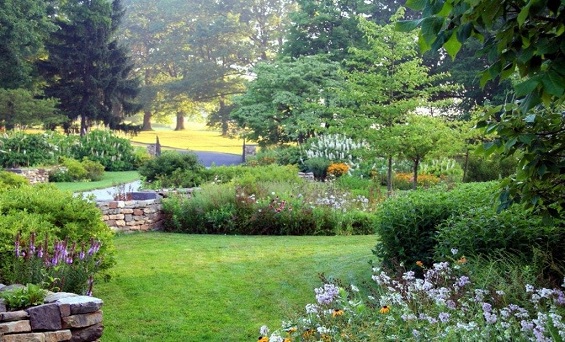Landscape design is an art form that combines aesthetics, functionality, and environmental harmony to create stunning outdoor spaces. Whether you have a small backyard or a vast garden, understanding the principles of landscape design is crucial to transforming your outdoor area into a visually appealing and well-balanced sanctuary. In this article, we will explore the fundamental principles that guide landscape designers in creating harmonious and captivating outdoor landscapes.

Exploring the Key Principles of Landscape Design
Unity and Harmony
Unity refers to the coherence and sense of completeness in a landscape design. It involves creating a harmonious flow that ties together various elements within the landscape. Achieving unity often involves using consistent design elements, such as recurring colors, textures, and materials. This cohesion ensures that the entire landscape feels like a unified and integrated space.
Balance
Balance is the distribution of visual weight in a landscape design. There are two types of balance: symmetrical and asymmetrical. Symmetrical balance involves creating a mirror image on either side of a central axis, while asymmetrical balance involves distributing visual weight in a way that is not identical on both sides but still achieves equilibrium. Balance can be achieved through the strategic placement of plants, hardscapes, and structures.
Scale and Proportion
Scale and proportion are essential in landscape design to create a pleasing and balanced composition. Scale refers to the size of various elements in relation to each other and the surrounding environment. Proportion, on the other hand, refers to the relationship between different elements and how they fit together in the overall design. Achieving the right scale and proportion ensures that elements don’t overpower or get lost within the landscape.
Focal Points
Focal points are significant features or elements in a landscape that draw attention and create visual interest. They serve as the center of attraction and guide the viewer’s eye through the landscape. Focal points can be natural, like a striking tree or rock formation, or human-made, like a water fountain, sculpture, or a well-placed seating area.
Rhythm and Repetition
Rhythm is the sense of movement and pattern in a landscape design. It is achieved through the repetition of elements such as plants, colors, and textures. This repetition creates a sense of unity and leads the eye through the space. Thoughtful use of rhythm adds a dynamic quality to the landscape, making it visually engaging.
Transition
Transition is the smooth flow from one area of the landscape to another. It involves creating a gradual shift in elements, such as plants, hardscapes, or elevation changes, to avoid abrupt and jarring transitions. Smooth transitions create a sense of continuity and make the landscape feel interconnected.
Functionality
A well-designed landscape is not only visually pleasing but also functional and practical. Consider the intended use of the outdoor space and design it to accommodate various activities, such as dining, entertaining, gardening, or relaxation. Thoughtful placement of pathways, seating areas, and outdoor structures enhances the usability of the landscape.
Sustainability and Environment
Incorporating sustainable practices and environmentally friendly elements is becoming increasingly important in landscape design. Choose native plants that require less water and maintenance, utilize efficient irrigation systems, and incorporate eco-friendly materials in hardscape construction. A sustainable landscape design not only reduces environmental impact but also contributes to the overall health and biodiversity of the ecosystem.
By applying these principles of landscape design, you can create a captivating and functional outdoor space that complements your home and connects you with nature. Whether you seek a peaceful garden retreat or an inviting entertaining area, thoughtful landscape design will enhance the beauty and value of your property for years to come.





